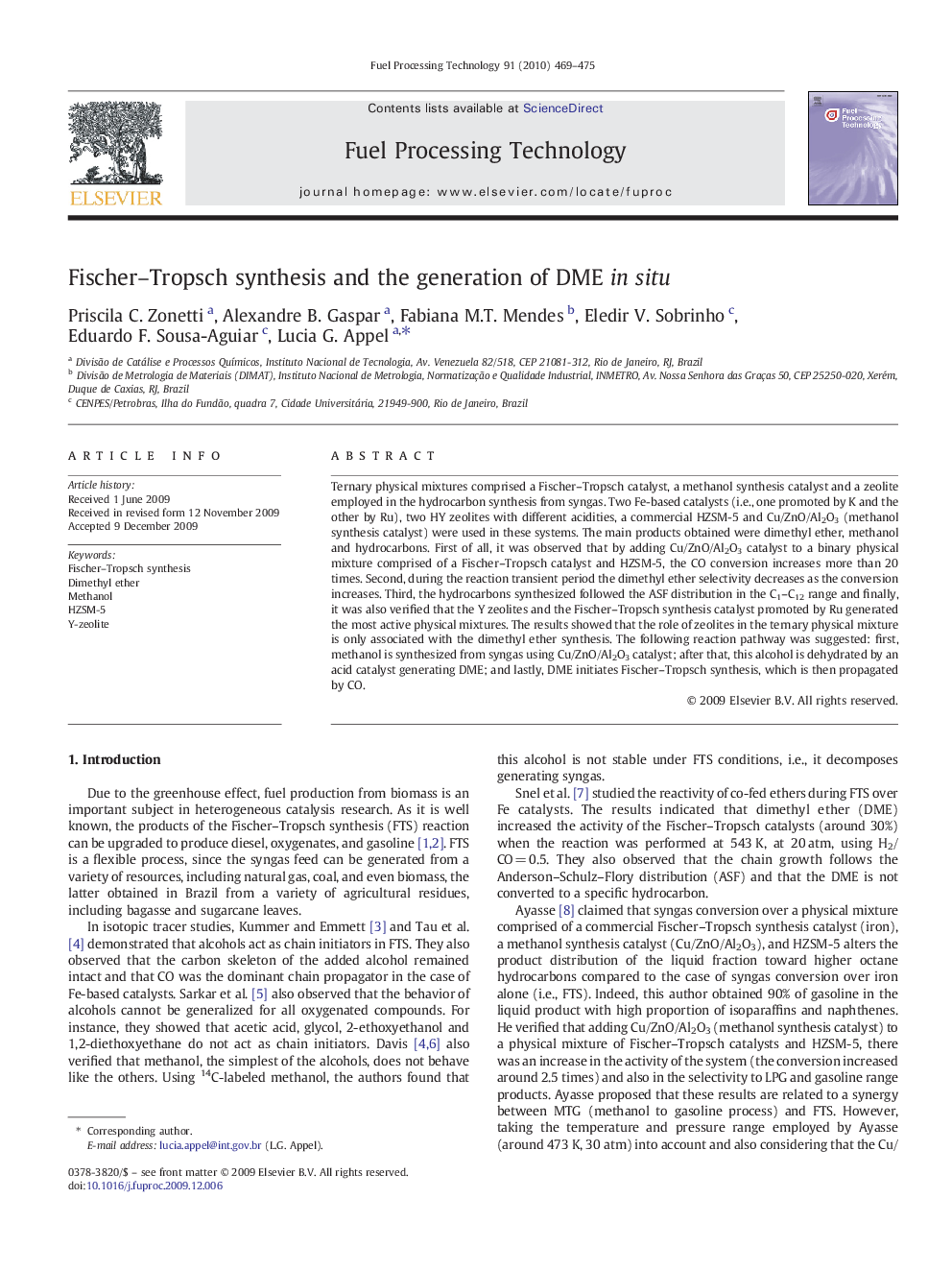| Article ID | Journal | Published Year | Pages | File Type |
|---|---|---|---|---|
| 210732 | Fuel Processing Technology | 2010 | 7 Pages |
Ternary physical mixtures comprised a Fischer–Tropsch catalyst, a methanol synthesis catalyst and a zeolite employed in the hydrocarbon synthesis from syngas. Two Fe-based catalysts (i.e., one promoted by K and the other by Ru), two HY zeolites with different acidities, a commercial HZSM-5 and Cu/ZnO/Al2O3 (methanol synthesis catalyst) were used in these systems. The main products obtained were dimethyl ether, methanol and hydrocarbons. First of all, it was observed that by adding Cu/ZnO/Al2O3 catalyst to a binary physical mixture comprised of a Fischer–Tropsch catalyst and HZSM-5, the CO conversion increases more than 20 times. Second, during the reaction transient period the dimethyl ether selectivity decreases as the conversion increases. Third, the hydrocarbons synthesized followed the ASF distribution in the C1–C12 range and finally, it was also verified that the Y zeolites and the Fischer–Tropsch synthesis catalyst promoted by Ru generated the most active physical mixtures. The results showed that the role of zeolites in the ternary physical mixture is only associated with the dimethyl ether synthesis. The following reaction pathway was suggested: first, methanol is synthesized from syngas using Cu/ZnO/Al2O3 catalyst; after that, this alcohol is dehydrated by an acid catalyst generating DME; and lastly, DME initiates Fischer–Tropsch synthesis, which is then propagated by CO.
